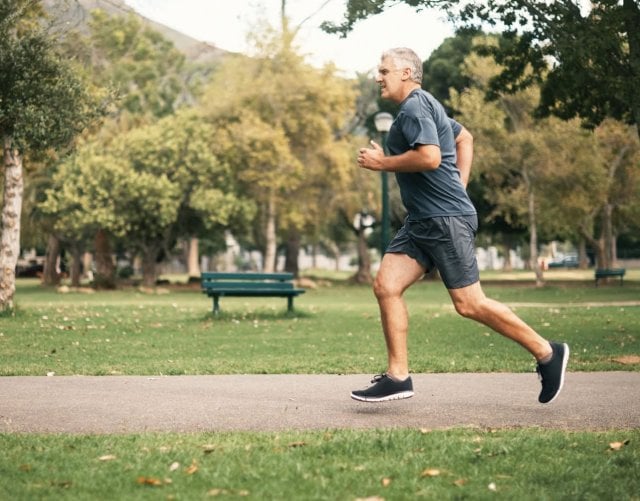Find Your Phase

ALL-ACCESS SUBSCRIBER CONTENT
This is a preview from the summer issue, Subscribe for All–Access Here
By John Hofman, CSCS*D, TSAC-F*D, MS
Firefighters aren’t athletes – they’re firefighters. They come in all different shapes, sizes, and abilities and they’re all at different points in their careers.
It’s no secret that firefighting is a physically demanding job and fitness plays an important role. Terms like “Occupational Athlete” or “Tactical Athlete” are often used by fitness professionals when discussing the type of physical training needed for optimal job performance. But the reality is firefighters aren’t athletes – they’re firefighters.
There’s a temptation to look for simple solutions to difficult problems but when certain training modalities claim that their way is the only way firefighters should train, nothing could be further from the truth. It’s like saying that “there is only one way to vent a roof” or the “smooth bore nozzle is the only way to go.” We need to step back and assess the needs of the individual firefighter, considering at what point he or she is in a career, and pinpointing the best training solutions for that point.
Firefighters go through four phases during their careers: Academy, Probationary, Firefighter, and Chief. Each phase has different priorities, and understanding these is essential for developing a specific, targeted physical training program.
Different career phases have different priorities, so we can’t simply assume there’s only one way to exercise. Research has shown that one third of all fire service injuries can be attributed to physical exercise. Can’t you just imagine some official discovering this information and creating a policy that declares “no exercise during work hours”?
We need to be smart about how we prescribe exercise. Words like “functional”, “multi-joint”, and “multi-planar” are just that – words, not prescriptions for healthy training. We all walk, squat, bend, and lift every day so our exercise routines should mimic those daily movements and be based on our current fitness goals and, most importantly, the career phase in which we find ourselves.
0.1 Recruit
PRIORITY
Performance Training
AGE RANGE
25-29

DESCRIPTION
This phase has the closest association with an athlete because the priority is performance training. Many recruits enter the fire academy in below-average physical shape, and it is our job as fitness professionals to enhance their performance, without causing injury, to help them succeed in the academy.
SOLUTION
A periodized program that encompasses all the physical requirements needed in the fire service will allow the fitness professional to develop the most effective means of training for both the class and the individual. It will also allow them to expose their recruits to different modalities that may be useful later in their careers.
RECOMMENDATION
Create a periodized program that will complement the drill ground and enhance the fire recruit’s ability to perform. Exercises should focus on activation, mobility and stability, strength, speed, endurance, and recovery. Randomization should be avoided.
0.2 Probation
PRIORITY
Maintenence
AGE RANGE
30-35

DESCRIPTION
While in the academy, fire recruits enhance their physical fitness and graduate in the best shape of their lives. Once they enter into their probation phase, they’re expected to maintain a certain level of fitness. The challenge is that while trying to learn a new job, maintaining fitness levels can slip down the list of priorities. Learning engine operations, truck operations, EMS protocols, cleaning duties and inspections, in addition to handling the occasional dispatch call, can be overwhelming. Fitness drops to the bottom of the list.
The average weight gain is 28 lbs, largely thanks to poor eating habits. While in the academy, a recruit needs to consume a large number of calories to maintain a high level of energy. Following graduation, if that huge caloric intake isn’t adjusted, weight gain is inevitable.
SOLUTION
To maintain their level of fitness, probationary firefighters should exercise a minimum of two days per week at 70 percent of their aerobic capacity. Believe it or not, just three months of no exercise can cause probationary firefighters to lose roughly half of their aerobic ability! An exercise program should take into consideration schedules at home and at work, and should be designed to maintain aerobic capacity. Still widely regarded as a good measure of physical fitness, a lack of aerobic capacity has been shown to be an accurate predictor of death linked to cardiovascular problems.
RECOMMENDATION
High-intensity intermittent training may improve both anaerobic and aerobic energy systems significantly, so we recommend performing intervals runs.
0.3 Firefighter
PRIORITY
Fitness
AGE RANGE
35-45

DESCRIPTION
Once firefighters have completed probation, they progress into their jobs and begin to realize that they are out of shape and getting older! As we age, we lose flexibility, muscular strength and endurance, and our aerobic capacity begins to decrease. Testosterone production begins to slow down in males and we start to notice more belly fat. Oh yeah, we’re probably married, have a mortgage, and have even less free time than we did in our probationary period.
Then, one day during a routine call, we find ourselves out of breath. Just a few years ago, we were able to perform the task at hand without hesitation, but now, we’re winded and struggling for oxygen. The tough reality hits – and we realize we’re out of shape! Given that the NFPA reports that most injuries for career firefighters occur between the ages of 30 and 39, staying in shape is essential.
SOLUTION
Getting the firefighter to move again is our main priority. It doesn’t matter if it is jumping rope, using an elliptical, or performing a circuit. What is important is starting to do something to establish healthy patterns and make fitness a priority. Over time, the exercise program can be adjusted to ensure that participants not only look and perform better, but feel better too. Encouraging movement is vital at this stage.
RECOMMENDATION
Anything! Walk, run, swim, bike….just start making fitness a priority.
0.4 Chief
PRIORITY
Injury Prevention
AGE RANGE
45+

DESCRIPTION
Over the years firefighting takes its toll on your body. Low back pain, shoulder pain, and other physical injuries are very common, even if you exercise and take care of your body. It’s really only a matter of time before we all experience some type of back pain. Our priority at this stage, therefore, is injury prevention.
SOLUTION
Because the job places so much stress on the body, we should incorporate movement patterns that focus on thoracic and hip mobility. Many firefighters have weak glutes and tight hip flexors; therefore, stretching and strengthening those areas is recommended. Pelvic stability diminishes over the years and it becomes difficult to maintain a neutral pelvis during various activities. Combat this by including exercises such as split squats and the “farmer’s walk” to help strengthen the lumbo-pelvic region. Finally, use a foam roller to loosen up tight muscles or and untie the knots.
RECOMMENDATION
Refrain from explosive-style movements such as box jumps or Olympic lifts, and focus on quality over quantity. The focus should be on getting you healthy for retirement.
Podcast
Contests & Promotions
















